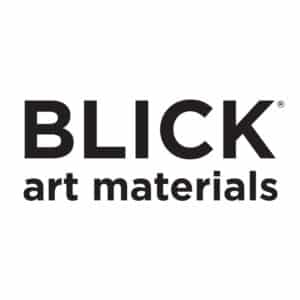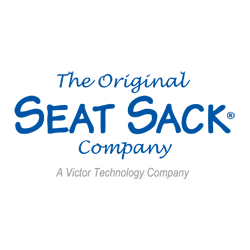By Andrew Glasmacher
The quest for clear intelligibility in public speaking environments has been around for thousands of years. Modern technology has allowed us to create public-address systems that can cover thousands of arenas, stadiums, even Times Square. Audio engineers spend years learning to tune their systems to provide the best possible intelligibility with a pleasing tone.
Sophisticated time-alignment formulas are used to make sure the sound reaching the listeners’ ears isn’t smeared by the sound from other speakers in the room. The result is a clearly heard and understood message that comes from stages, podiums and churches around the world.
There are public speakers closer to home, however, whose messages are of critical importance. The concepts they present can literally change lives, and they sometimes speak to hundreds of people each day.
These public speakers are better known as school teachers, and they have many challenges in communication. Teachers work in classrooms where they may encounter students who have hearing loss, or English is their second language. They may have very reverberant classrooms such as a gymnasium or multipurpose room. Fortunately, technology can help.
One of the major barriers to intelligibility is background noise. Background noise comes in many forms, such as papers rustling, people moving in their seats or having side conversations, air handling systems (HVAC), or close proximity to major roadways, to name a few.
All of these sounds can be exacerbated by the same things – reverberation and echo.
Hard surfaces in construction can cause audio artifacts such as reverberation, echo (delay), amplification of some sounds, and even cancellation of frequencies. Reverberation can be defined as the collection of reflected sounds from the surfaces in an enclosure like an auditorium. In some cases, reverberation can enhance and reinforce the sound of a performer, such as a singer in an opera house.
An echo is the repetition of a sound caused by reflection of sound waves from a surface. The larger the space, the longer it takes for the echo to reach the listener; in extreme cases, the echo can be as loud as the direct sound, delayed several milliseconds to a full second or more.
In larger classrooms, the effects of reverberation and echo on intelligibility are immediately perceptible. The reflected sounds interfere with the direct sound and often make it difficult to understand what is being said by a teacher, coach, or even a multimedia broadcast.
When design philosophies or budgetary restraint make structural changes to the building impossible, the best way to improve acoustics in a room is to apply acoustic treatments.
Acoustics is a science unto itself and best results can be obtained by consulting a reputable acoustician. Acousticians spend years developing their knowledge of how building materials, room size, and other factors affect intelligibility.
There are several types of acoustic treatment that could be employed as well as some aesthetic features that could also favorably affect acoustics in a school environment.
Carpet
Adding carpeting to a room can help absorb the reflection of some of the higher frequencies that come from the ceiling, helping to reduce reverberation. Carpet can also help reduce distracting background noise by softening footfalls of people walking in the aisles and reducing the impact of items dropped onto the floor.
Draperies
Like carpeting, draperies can absorb some of the high frequencies that contribute to excessive reverberation caused by reflections of sound from opposing walls. This can make it easier to hear and understand the direct sound coming from a podium or public-address system. The heavier and thicker the draperies, the more sound they can absorb.
Seating
Although traditional wooden chairs are beautiful, spill resistant, and generally long-lasting, benches or chairs with padded backs can also help reduce the number of reflective surfaces in a room, with the side benefit of adding comfort for the students.
Acoustic Panels
Fabric-covered acoustic fiberglass panels can effectively and economically help control overly reverberant rooms by absorbing some of the acoustic energy and reflections that affect intelligibility. Panels come in a variety of thicknesses, fabrics and colors, and can be custom-made to match the décor. They can be made in many shapes and sizes to help with placement options. As this is a semi-custom option, it’s always a good idea to involve an acoustician when choosing panels.
Infrared PA systems are another way to assure teachers are being heard. A microphone with an infrared emitter worn around the neck on a lanyard can simultaneously feed an installed speaker system in the room as well as an assistive listening system for students who are hard of hearing.
Studies have shown that assistive listening systems can also help children with Attention Deficit Disorder focus on what’s being taught because they hear the teacher through a headset which can effectively reduce some of the distracting sounds they may hear.
Ideally, speaker systems should be placed not only to avoid feedback, but also to provide even coverage throughout the space. Here are some things to consider:
- Does an area such as an office or overflow need audio coverage?
- Are there balconies or alcoves that require additional speakers?
- Is audio required in the lobby or entry areas? What type of microphones will be used?
An audio consultant or system integrator should always be involved in the design of a venue that will be utilizing amplified audio.
Try to choose one who specializes in the type of venue you are building. They are experts at making sure every word is heard and understood, as well as providing the best possible quality of audio for your budget.
Remember, the time to consider acoustics and audio systems is in the design phase, when at all possible. Good acoustic design and acoustic treatments will ensure none of the message gets lost.
Andrew Glasmacher is the product training manager for Listen Technologies, www.listentech.com. Listen Technologies brings power and clarity to the sounds that enrich people’s lives—with solutions that overcome the challenges of noise, distance, clashing conversations, and hearing loss to deliver precise and personalized audio in any setting or environment.











